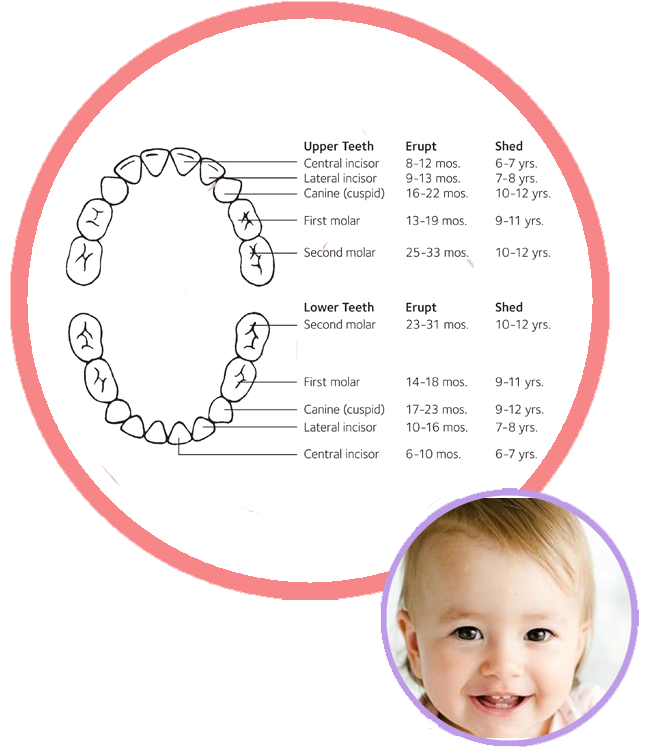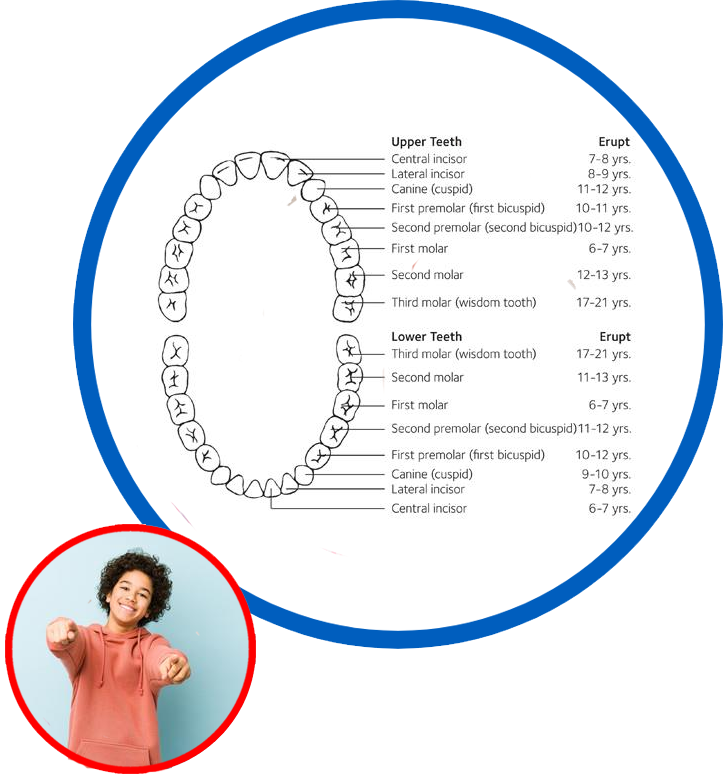
Throughout your life and dental development, you will have two sets of teeth: primary (baby) teeth and secondary (permanent or adult) teeth. The primary teeth appear around ages 6-8 months, and all 20 are in place by age 3. The enamel constituting primary teeth is usually a bit different than that of adult teeth, making these teeth slightly whiter looking compared to adult teeth. They are very important teeth for speech and language development and also serve as a place holder for the future adult teeth. Excellent care and maintenance of these teeth is critical to the development of a healthy adult set of teeth.


Permanent teeth will begin to grow around age 6, and with the exception of wisdom teeth, are usually all present between ages 12 and 14. This process starts with the four front teeth called the incisors between 6 and 8 years old. There is then a break in eruption and development until about age 10 to 10.5 when the side teeth called premolars and canines begin to replace the baby canines and molars. The next teeth to grow in are the 12-year molars and finally the wisdom teeth (if they can fit in the mouth). Wisdom teeth typically begin breaking through from age 17 and on. The total number of permanent teeth is 32, though few people have room for all 32 teeth, which is why wisdom teeth are usually removed towards the end of dental development.
Your front teeth are called incisors. The sharp “fang-like” teeth are canines. The next side teeth are referred to as premolars or bicuspids, and the back teeth are molars. Your permanent teeth are the ones you keep for life, so it is important that they are brushed and flossed regularly and that periodic check-ups by a dentist are scheduled to maintain the teeth and gum tissues in a healthy state.
